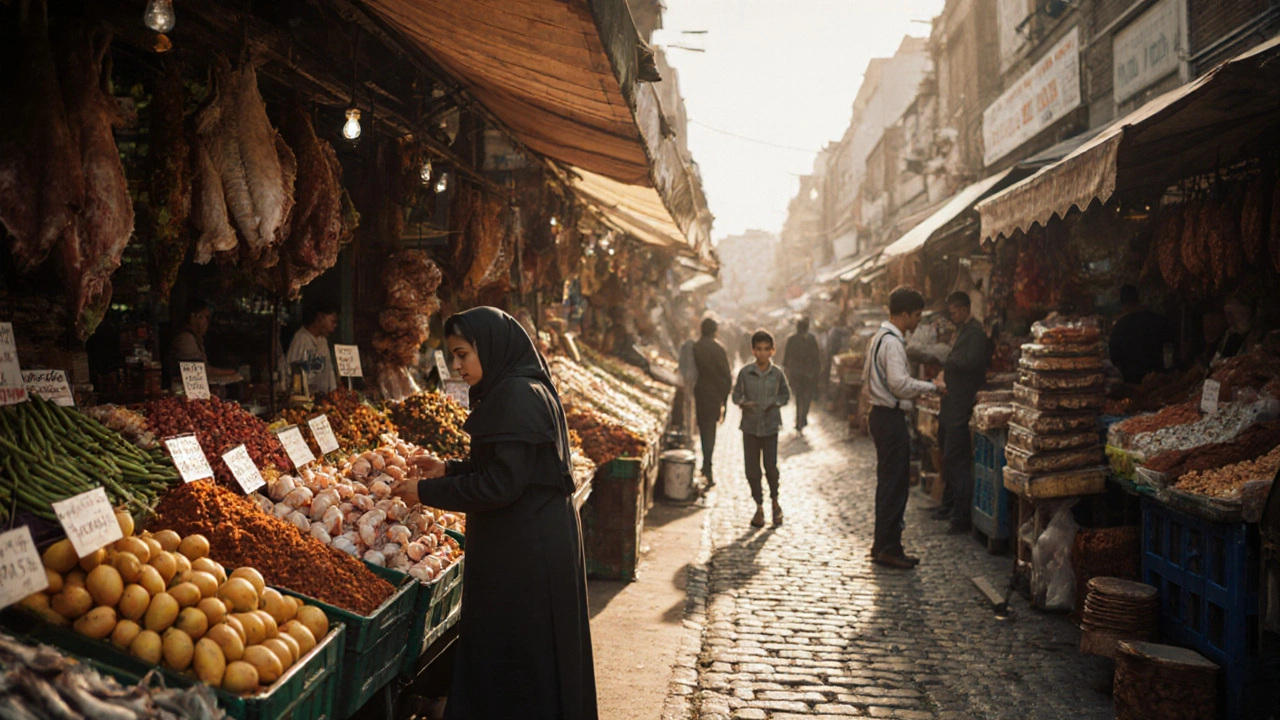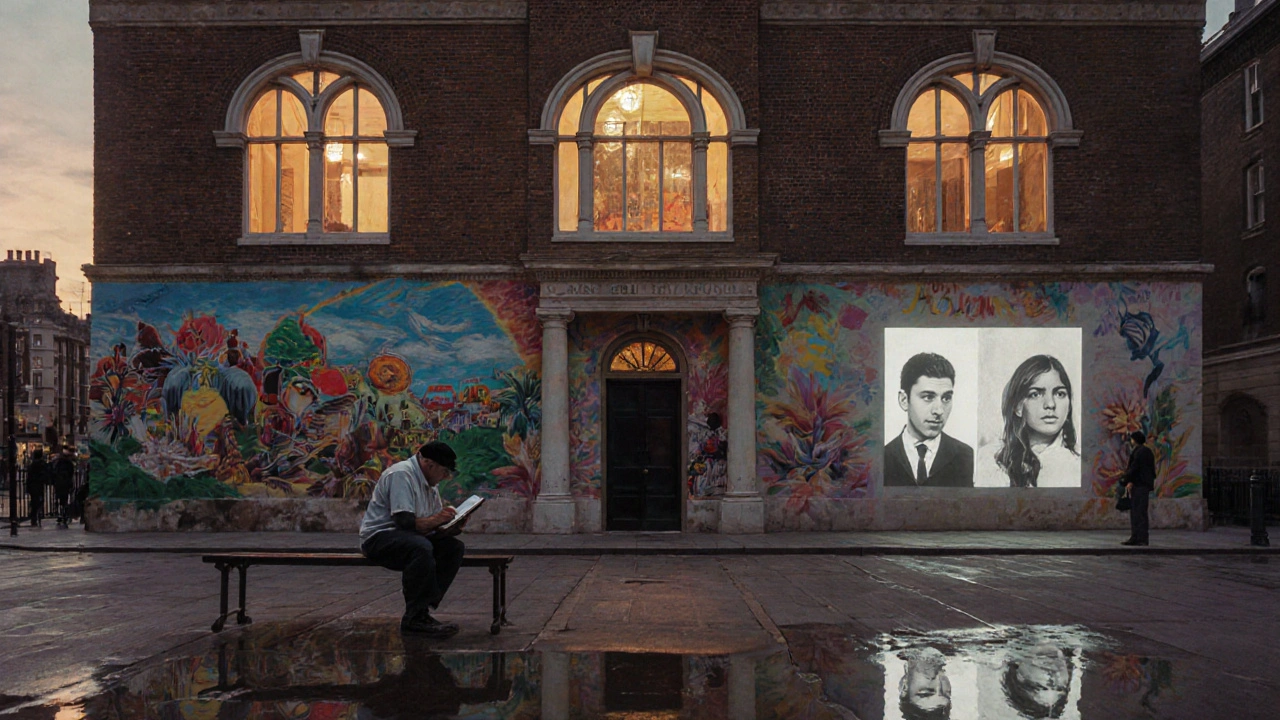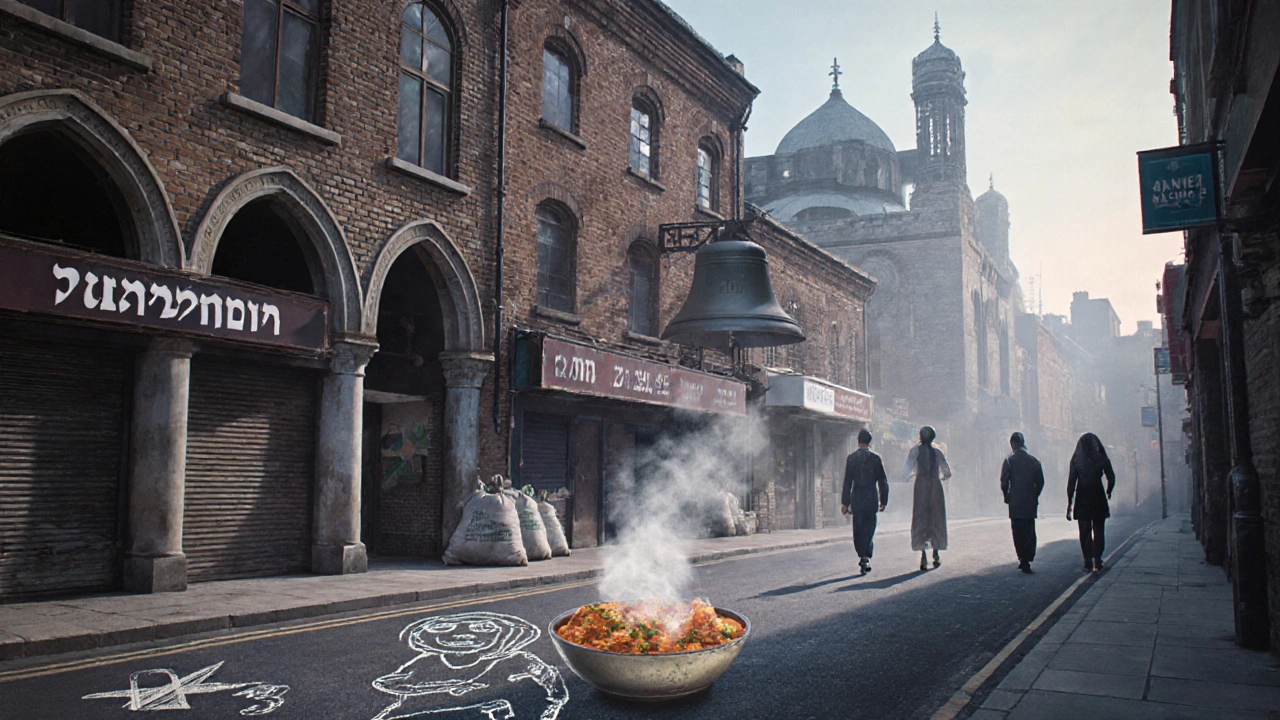
Whitechapel isn’t just another name on a London tube map. It’s a place where the smell of fresh roti mixes with the ink of street art, where 19th-century tenements stand beside modern art studios, and where the ghosts of Jack the Ripper share the pavement with local grandmas buying spices for Sunday curry. If you think of East London as just gentrified cafés and hipster boutiques, you’re missing the real heartbeat of Whitechapel - a neighborhood that’s been absorbing, reshaping, and refusing to erase its past for over 150 years.
Whitechapel Market: More Than Just a Bargain Hunt
Open since the 1880s, Whitechapel Market isn’t a tourist gimmick. It’s a working-class lifeline. Every day, from Monday to Saturday, over 200 stalls spill out along Whitechapel High Street, offering everything from halal butchers with lamb chops still warm to stalls selling hand-stitched hijabs and second-hand vinyl records. You’ll find £1 mangoes from Bangladesh, £3 pots of homemade chutney, and £500 vintage cameras tucked between piles of fresh okra.
Unlike Camden or Borough Market, there’s no curated aesthetic here. No $12 avocado toast. No branded tote bags. This is commerce shaped by need, not Instagram. The stallholders? Most are third-generation traders. One woman, Fatima, has been selling samosas since 1987. Her son now runs the stall next to her. She doesn’t have a website. She doesn’t need one. Her customers come because they know her by name.
Go on a Tuesday morning. That’s when the fishmongers bring in the day’s catch from Billingsgate. The smell of salt and seaweed hangs thick in the air. Watch how people haggle - not loudly, but with quiet precision. A £10 discount on a pile of prawns? That’s not a sale. That’s a ritual.
Whitechapel Gallery: Where Art Meets the Street
Just a five-minute walk from the market, the Whitechapel Gallery sits like a quiet monument to radical creativity. Opened in 1901, it was one of the first public galleries in London to show modern art - and it didn’t wait for permission. In 1913, it hosted the first UK exhibition of Picasso. In 1988, it gave Damien Hirst his first solo show. In 2015, it featured a major retrospective of Frida Kahlo that drew 150,000 visitors.
Today, it still pushes boundaries. Recent shows have included Palestinian photographers documenting life under siege, Nigerian textile artists reimagining colonial patterns, and a sound installation made from recordings of street vendors in Whitechapel. The gallery doesn’t just display art - it listens to the neighborhood.
What makes it special isn’t the prestige. It’s the accessibility. Entry is free. The staff remember your name if you come regularly. There’s no velvet rope. No “please don’t touch” signs on the interactive pieces. One regular visitor, a retired bus driver named Derek, told me he comes every Thursday just to sit in the courtyard and sketch. “It’s the only place in London,” he said, “where I feel like I belong.”

Cultural Heritage: Layers You Can’t Delete
Walk down Whitechapel Road and you’re walking through layers of migration. The Irish came in the 1840s fleeing famine. Jews arrived in the 1880s escaping pogroms. Bangladeshis settled here after World War II, turning the area into one of Europe’s largest South Asian communities. Each group left something behind - a synagogue, a bakery, a tailor’s shop, a prayer hall.
The London Jewish Cultural Centre still operates out of a restored 19th-century synagogue. The Altab Ali Park, named after a Bangladeshi man murdered in a racist attack in 1978, is now a quiet green space where elders play chess and kids kick footballs. The Whitechapel Bell Foundry, founded in 1570, cast Big Ben and the Liberty Bell. It closed in 2017 - but its bricks are still standing, now part of a community arts hub.
These aren’t museum exhibits. They’re living history. You can still buy a challah loaf from the same bakery that’s been open since 1921. You can hear Bengali poetry recited in the local library. You can see a 100-year-old sign in Yiddish still hanging above a shuttered shop, its letters faded but readable.
Who Owns Whitechapel?
There’s pressure. Developers want to turn the old warehouses into luxury flats. Property prices have risen 40% since 2018. New coffee shops with oat milk lattes are popping up near the market. Some locals worry it’s becoming a “postcard version” of itself - polished, safe, and stripped of its grit.
But change doesn’t always mean loss. The Whitechapel Idea Store, a community library and learning center, now offers free coding classes for teens and English lessons for new migrants. The East London Art Collective runs mural projects where local kids paint over graffiti with stories of their grandparents’ journeys. The market still thrives because people refuse to let it become a theme park.
What keeps Whitechapel real isn’t nostalgia. It’s action. It’s the woman who runs a free food kitchen out of her garage every Friday. It’s the student who turns the gallery’s empty walls into poetry walls. It’s the old man who still brings his grandson to the market every Saturday to buy a single sweet potato - just because he remembers how his father used to do it.

How to Experience Whitechapel Right
If you want to see Whitechapel as it is - not as someone wants it to be - follow this:
- Start at Whitechapel Market on a weekday morning. Buy a spiced chai from a stall that doesn’t have a name on it. Sit on the bench and watch.
- Walk to the Whitechapel Gallery. Don’t rush. Spend at least an hour. Look at the walls, not just the labels.
- Visit Altab Ali Park at sunset. Sit quietly. Listen to the languages around you.
- Stop by the Whitechapel Bell Foundry visitor center. Ask about the casting process. They’ll show you the original bell molds.
- End at The Whitechapel pub - yes, it’s named after the area. Order a pint. Talk to the bartender. He’s been there 30 years.
Don’t take photos of the market to post online. Take a moment to understand why it exists. Don’t treat the gallery like a backdrop for selfies. Let the art speak. Don’t call it “up-and-coming.” It’s been here. It’s still here.
What’s Next for Whitechapel?
The future isn’t written yet. But the people who live here are writing it - one market stall, one mural, one shared meal at a time. There’s no grand plan. No corporate rebranding. Just a stubborn belief that culture isn’t something you sell. It’s something you keep alive by showing up.
Whitechapel doesn’t need to be saved. It needs to be seen - not as a relic, not as a trend, but as a living, breathing, messy, beautiful neighborhood that refuses to be boxed in by labels.
Is Whitechapel safe for tourists?
Yes, Whitechapel is safe for visitors who respect the neighborhood. Like any urban area, it’s smart to stay aware, especially late at night. But during the day, the market, galleries, and parks are bustling with families, students, and locals. Crime rates have dropped steadily since 2015. The biggest risk? Getting so absorbed in the culture you forget to check the time.
Can I visit Whitechapel Market on Sunday?
No, Whitechapel Market is closed on Sundays. It operates Monday to Saturday, 8 AM to 6 PM. Some shops around the market stay open, but the stalls are gone. If you want the full experience, go midweek - Tuesday to Thursday are the busiest and most authentic days.
Is the Whitechapel Gallery worth visiting?
Absolutely. It’s one of the most important contemporary art spaces in the UK, and entry is free. Unlike commercial galleries, it doesn’t sell art - it sparks conversation. Recent exhibitions have included work from Syria, Sudan, and Sri Lanka. If you’re interested in art that reflects real lives, not just auction prices, this is the place.
What’s the best way to get to Whitechapel?
Take the London Underground District or Hammersmith & City line to Whitechapel Station. It’s a 5-minute walk from the station to the market and gallery. Buses 25, 205, and 254 also stop nearby. Avoid driving - parking is scarce and the streets are narrow. Walking from Aldgate or Tower Bridge takes about 20-25 minutes and gives you a real sense of the area’s transition.
Are there good food options in Whitechapel?
More than good - exceptional. The market has some of London’s best Bangladeshi curries, Polish pierogi, and Somali sambusa. Try Alam’s Kitchen for a £6 chicken curry with fresh naan. Or head to Shahjahan Bakery for warm, flaky samosas and sweet rosewater halwa. Don’t miss the Indian sweet shop with the neon sign - it’s been there since 1973.
Whitechapel doesn’t ask you to like it. It just asks you to notice it. And if you do, you’ll leave with more than photos. You’ll leave with a story - one that doesn’t fit neatly into any guidebook, but belongs to the people who live here.